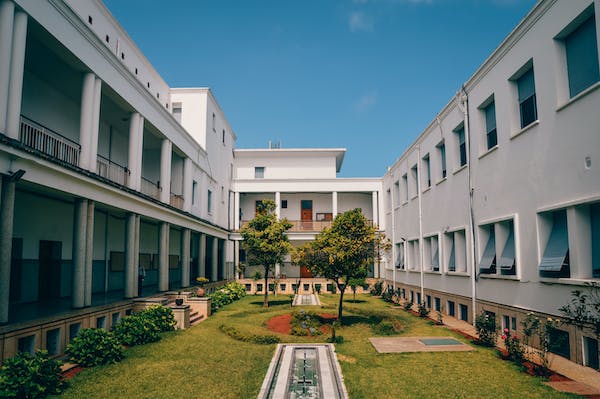
Rural Schools Compared to Urban Ones

Rural Schools vs Urban Schools: A Comparison of Educational Opportunities. Rural schools and urban schools have been the subject of much debate in the United States, with many people questioning whether students in rural areas receive the same quality of education as their urban counterparts. While there are certainly differences between these two types of schools, it is important to understand the unique challenges and opportunities that each presents.
Understanding Rural and Urban Schools
Rural schools are typically located in small towns or remote areas, while urban schools are located in larger cities. Rural schools often have smaller class sizes and a more personalized learning environment, while urban schools may have more resources and a more diverse student population. Despite these differences, both types of schools face similar challenges, such as funding constraints, teacher shortages, and the need to provide high-quality education to all students.
Educational Outcomes on Rural Schools vs urban schools
Research has shown that students in rural schools may have lower academic achievement and graduation rates than their urban peers. However, this is not always the case, and there are many examples of successful rural schools and students. It is important to recognize that educational outcomes are influenced by many factors, including poverty, family background, and community resources.
Key Takeaways on Rural Schools vs Urban Schools
- Rural Schools vs urban schools have unique challenges and opportunities.
- Educational outcomes are influenced by many factors, not just school location.
- Both types of schools face similar challenges, such as funding constraints and teacher shortages.
Understanding Rural Schools vs urban schools
Rural Schools vs urban schools have different characteristics that impact the quality of education and the resources available to students. Understanding these differences is essential to address the unique challenges faced by each type of school.
Characteristics of Rural Schools
Rural schools are often located in small towns or remote areas, with a smaller student population and a lower teacher-to-student ratio. This can lead to a more personalized learning experience, with teachers having more time to work with individual students. However, rural schools may also have fewer resources and less funding, leading to a lack of technology, extracurricular activities, and specialized programs.
According to a report by UWA Online, rural schools have lower rates of college enrollment compared to urban schools, with only 59% of students directly enrolling in college. Additionally, mental health care can be a challenge in rural areas, with 65% of rural counties lacking a psychiatrist. However, some states are considering school-based telemedicine programs to provide counseling services to students.
Characteristics of Urban Schools
Urban schools, on the other hand, are located in densely populated areas with a larger student population and a higher teacher-to-student ratio. This can lead to a more diverse student body and increased cultural exposure, but can also result in overcrowded classrooms and a lack of personalized attention.
According to a report by Collegenp, urban schools generally have more resources and funding compared to rural schools, with access to technology, extracurricular activities, and specialized programs. However, urban schools may also face challenges such as high rates of crime and violence, which can impact the safety and well-being of students and teachers.
Understanding the characteristics of rural and urban schools is essential to address the unique challenges faced by each type of school. While rural schools may have a more personalized learning experience, they may also lack resources and funding. Urban schools, on the other hand, may have more resources but may also face challenges such as overcrowding and safety concerns.
Educational Outcomes
Educational Performance in Rural Schools
According to a study by the Rural School and Community Trust, rural schools receive on average $1,200 less per student in state and local funding than urban schools. This difference in funding can lead to a lack of resources, such as technology, facilities, and extracurricular activities, which can ultimately impact student outcomes. As a result, rural schools tend to have lower graduation rates and lower test scores compared to their urban counterparts.
In addition to funding disparities, rural schools also face challenges in attracting and retaining highly qualified teachers. This is due in part to the isolation of rural communities and the limited job opportunities available for spouses and partners. As a result, rural schools may have a higher proportion of inexperienced or underqualified teachers, which can also impact educational outcomes.
Educational Performance in Urban Schools
Urban schools tend to have more resources and funding available compared to rural schools. This allows them to offer a wider range of extracurricular activities, advanced courses, and technology resources. However, despite these advantages, urban schools still face challenges in providing quality education to all students.
One of the biggest challenges facing urban schools is the achievement gap between students from different socioeconomic backgrounds. Students from low-income families and minority groups often face barriers to academic success, such as inadequate healthcare, unstable housing, and limited access to educational resources outside of school. As a result, urban schools may have lower test scores and graduation rates for these groups of students.
In addition, urban schools may also face challenges in managing large class sizes and maintaining safe and supportive learning environments. This can impact student engagement and academic outcomes, especially for students who may be struggling academically or emotionally.
Overall, while both rural and urban schools face unique challenges in providing quality education, it is clear that funding and resource disparities can have a significant impact on educational outcomes. It is important for policymakers and educators to work together to address these disparities and ensure that all students have access to the resources and support they need to succeed academically.

Challenges and Solutions
Challenges in Rural Schools
Rural schools face unique challenges that their urban counterparts do not. One of the most significant challenges is a lack of resources. According to a study by the Rural School and Community Trust, rural schools receive on average $1,200 less per student in state and local funding than urban schools. This funding gap can lead to a lack of resources, such as technology, facilities, and extracurricular activities, which can ultimately impact student outcomes.
Another challenge is the lack of access to high-quality teachers. Rural schools often struggle to attract and retain highly qualified teachers, which can lead to a shortage of experienced educators. This shortage can result in larger class sizes and less individualized attention for students.
Challenges in Urban Schools
Urban schools also face unique challenges. One of the most significant challenges is a lack of funding. Urban schools often have more students than rural schools, but they may not receive enough funding to provide adequate resources for all of their students. This lack of funding can lead to overcrowded classrooms, outdated facilities, and a lack of access to technology.
Another challenge is the high level of diversity in urban schools. Urban schools often serve students from a wide range of cultural and socioeconomic backgrounds, which can make it difficult to provide personalized instruction that meets the needs of all students.
Potential Solutions
There are several potential solutions to the challenges faced by both rural and urban schools. One solution is to increase funding for schools in both rural and urban areas. This increased funding can be used to provide resources such as technology, facilities, and extracurricular activities that can enhance student outcomes. Another solution is to provide incentives for highly qualified teachers to work in rural and urban schools. This can include loan forgiveness programs, housing incentives, and higher salaries.
Finally, personalized learning can be a solution to the challenges faced by both rural and urban schools. Personalized learning can help teachers tailor instruction to meet the needs of individual students, regardless of their cultural or socioeconomic background. This approach can help ensure that all students receive the support they need to succeed.









Leave a Reply